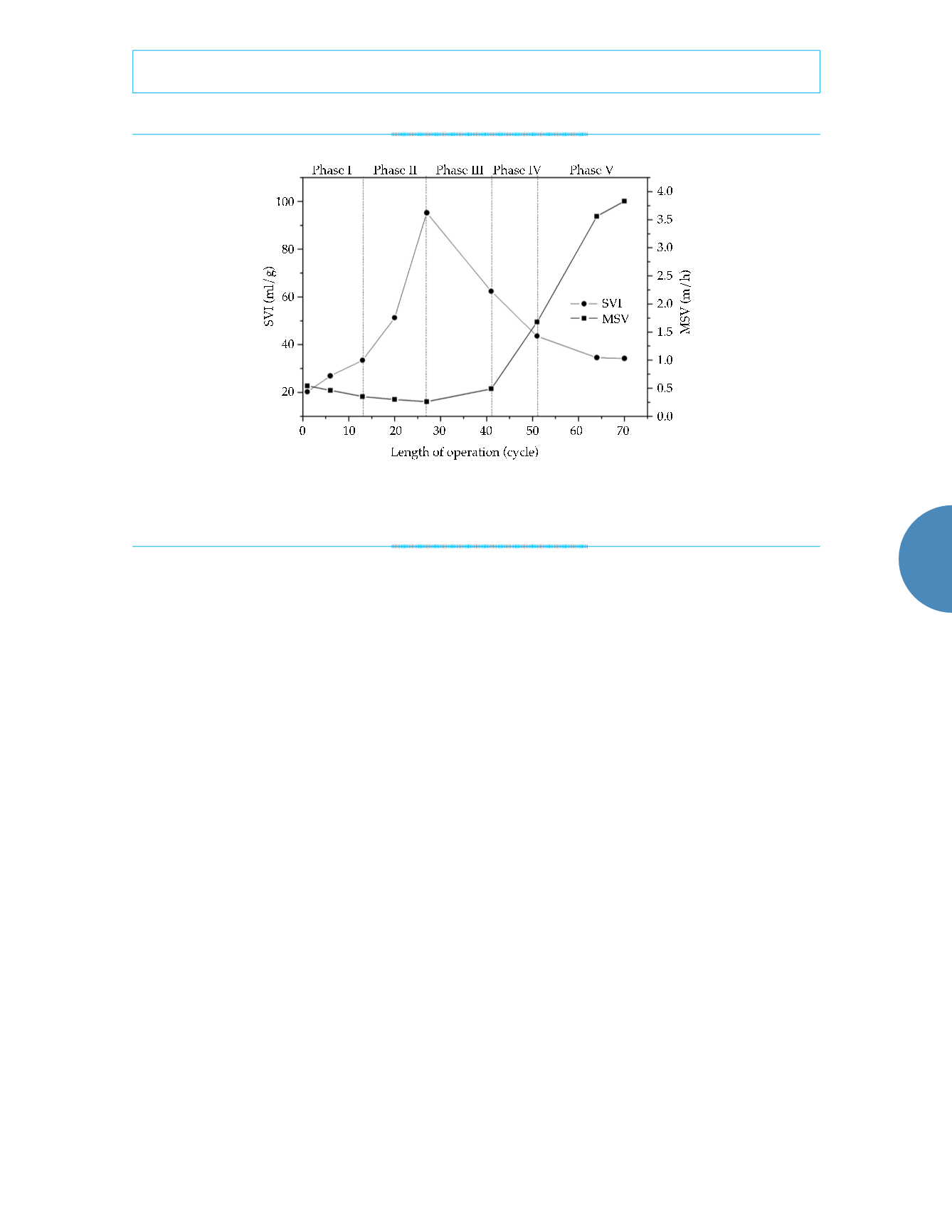
65
Tecnología y Ciencias del Agua
, vol. VIII, núm. 2, marzo-abril de 2017, pp. 61-70
Chen
et al.
,
Reactivation of hypersaline aerobic granular sludge after low temperature storage
ISSN 2007-2422
•
surface, settling property improved and small
size granules declined continuously. When
organic loading of reactor reached 4.50 kgCOD
m
-3
d
-1
, the loading level of reactor operating
before storage, the SVI and MSV was stable
around 34 ml g
-1
and 3.83 m h
-1
respectively. It is
considered that the settling performance of the
thawed granules have recovered to the initial
level before low temperature storage.
Experimental results show that activity of
microorganism inner the thawed granules,
especially activity of filamentous bacteria bind-
ing and connecting zoogloea bacteria in sludge
during granulation was inhibited, caused by the
short of nutrient substrate and DO in six-week-
idle period. It was found that granular sludge
morphology was on a loose structure and
simultaneously a large number of fragmented
microbe matrix appeared. With the running of
SBR, aerobic granular sludge gradually disinte-
grated to floc sludge and then massive light and
bulky granules were discharged form reactor on
the selective pressure aeration shear and organic
loading. Thereby, the settling property of gran-
ules in reactor performed an endlessly deterio-
rating trend. Although microbes in granules can
grow rapidly with the improvement of organic
loading (Wang, Zhang, & Wu, 2009), which
indicates that formation of aerobic granule is a
substrate loading rate-dependent process (Lee,
Chen, Show, Whiteley, & Tay, 2010; Liu, Tay,
& Liu, 2003), settling property had not been
ameliorated with increasing organic loading
to 1.12 kg COD m
-3
d
-1
after operation cycle 13.
From the changes of sludge morphology, it was
analyzed that the DO concentration in reactor
seemed to be sufficiently high (reached 4 to 5
mg l
-1
), but DO can’t diffuse into the granules
for it to be available to the bacteria located
within the granule, easily resulting in a relative
low DO concentration gradient and deficiency
oxygen in granules, which can promote domi-
nant filamentous growth in aerobic granular
sludge SBR (Gaval & Pernell, 2003). Evidence
shows that low-levels and moderate-levels of
filamentous bacteria growth do not cause op-
erational problems and may even stabilize the
granule structure (Liu & Liu, 2006). However,
overgrowth of filamentous bacteria as domi-
nant microorganism in granular sludge was
unwanted as it even led to eventual disintegra-
tion of aerobic granules. Therefore, results show
Figure 2. Variation of MSV and SVI during reactivation (organic loading of Phase I, II, III, IV and V is 0.90, 1.12, 1.50, 2.25
and 4.50 kg COD m
-3
d
-1
, respectively).


